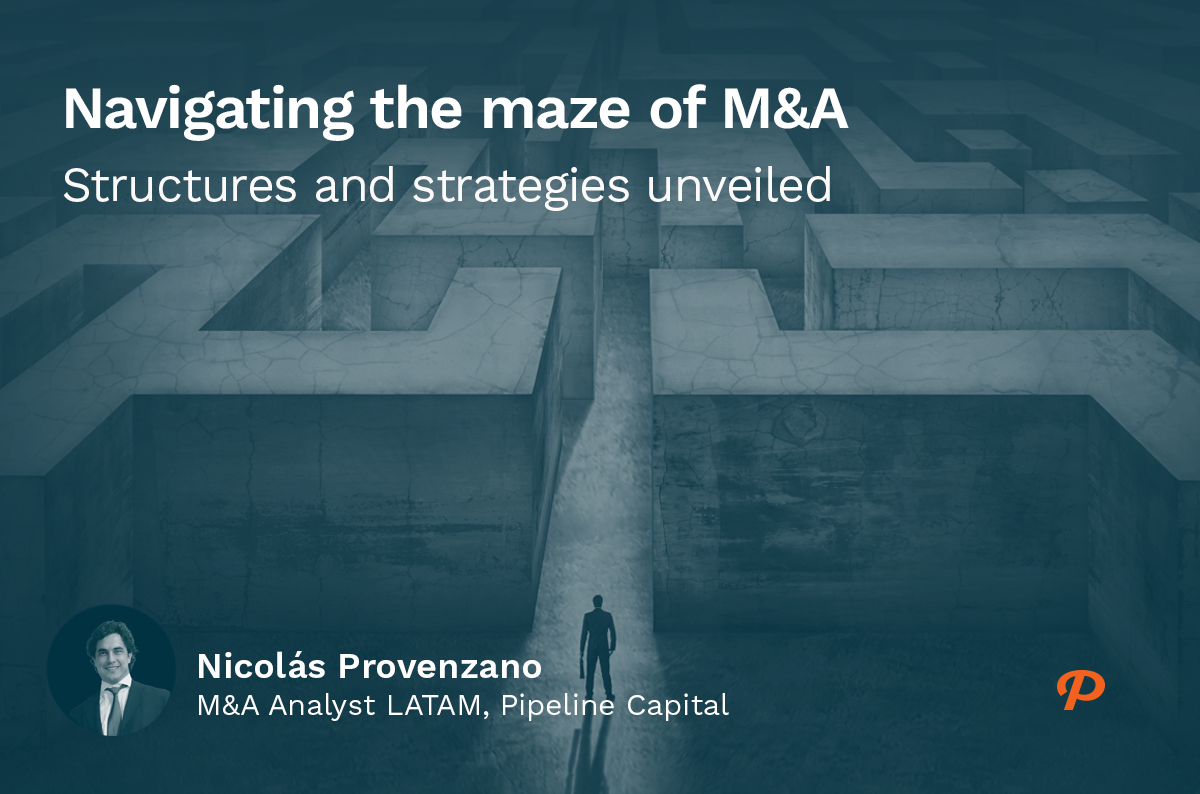In the dynamic world of business, growth and innovation are not just goals—they’re imperatives. Companies constantly seek ways to expand their presence, increase efficiency, and become market leader. One of the most powerful strategies to achieve these objectives is through M&A. However, one must understand the M&A landscape, with each type of deal offering unique benefits and challenges.
Whether you’re a seasoned executive, an investor, or a curious entrepreneur, understanding the different types of M&A structures and the strategic versus financial motivations behind these transactions can provide valuable insights into the mechanics of corporate growth. In this blog post, we’ll explore the diverse world of M&A, dissecting the various deal types and distinguishing between strategic and financial transactions with real-world examples to illustrate their impact.
Different Types of M&A Deals
Mergers and acquisitions can take various forms, each with its own characteristics and strategic objectives. Here are the main types of M&A deals:
1. Horizontal merger
- Definition: A merger between two companies that operate in the same industry and are direct competitors.
- Objective: To increase market share, reduce competition, and achieve economies of scale.
- Example: The merger of two automobile manufacturers.
2. Vertical Merger
- Definition: A merger between two companies that operate at different stages of the supply chain within the same industry.
- Objective: To improve supply chain efficiency, reduce costs, and gain control over the production process.
- Example: A car manufacturer acquiring a tire company.
3. Conglomerate Merger
- Definition: A merger between two companies that operate in unrelated industries.
- Objective: To diversify business operations and reduce risk by expanding into new markets.
- Example: A consumer electronics company merging with a food and beverage company.
4. Market Extension Merger
- Definition: A merger between two companies that sell similar products but operate in different markets.
- Objective: To expand market reach and customer base.
- Example: A European beverage company merging with a North American beverage company.
5. Product Extension Merger
- Definition: A merger between two companies that sell different but related products in the same market.
- Objective: To expand the product line and offer complementary products to customers.
- Example: A smartphone manufacturer merging with a company that produces smartphone accessories.
6. Consolidation
- Definition: Two or more companies combine to form a new entity, and the original companies cease to exist.
- Objective: To create a stronger, more competitive company with increased resources.
- Example: Two regional banks consolidating to form a new national bank.
7. Tender Offer
- Definition: A public offer made by one company to purchase the shares of another company at a specified price.
- Objective: To acquire control of the target company by purchasing a majority of its shares.
- Example: A company offering to buy shares of a target company at a premium to the market price.
8. Management Buyout (MBO)
- Definition: A transaction where the management team of a company acquires the company from its current owners.
- Objective: To give management greater control and ownership of the company.
- Example: The management team of a private company buying out the existing shareholders.
Difference Between Strategic and Financial Deals
Understanding the distinction between strategic and financial transactions is key to grasping the underlying motives of M&A activities.
Strategic Deals
Strategic M&A deals are driven by the acquiring company’s desire to achieve long-term strategic objectives, such as expanding market presence, acquiring new technologies, or improving operational efficiencies.
Characteristics:
- Synergies: Focus on achieving operational synergies, such as cost savings, revenue enhancement, and improved efficiencies. Fully integrating the target company.
- Long-Term Vision: Driven by long-term strategic goals and the desire to integrate the target company into the acquirer’s operations.
- Industry Focus: Typically involve companies within the same or related industries.
Amazon’s acquisition of Whole Foods in 2017. Amazon aimed to enter the brick-and-mortar grocery market, leveraging Whole Foods’ physical stores with its online platform to revolutionize the grocery shopping experience.
Financial Deals
Financial M&A deals are driven by financial investors, such as private equity firms or hedge funds, seeking to achieve financial returns through the acquisition, improvement, and eventual sale of the target company.
Characteristics:
- Investment Focus: Focus on achieving financial returns through investment strategies, such as cost-cutting, restructuring, and growth initiatives. In this case, the target company operates as a standalone entity.
- Short to Medium-Term Horizon: Driven by the goal of improving the target company’s financial performance and selling it for a profit within a few years.
- Diversified Portfolio: Financial buyers often invest in companies across various industries to diversify their investment portfolio.
Blackstone’s acquisition of Hilton Worldwide in 2007. Blackstone aimed to improve Hilton’s operations, expand its global footprint, and eventually take the company public again, generating substantial returns.
Navigating the intricate world of mergers and acquisitions can be both exhilarating and daunting. Each type of M&A deal, from horizontal and vertical mergers to tender offers and management buyouts, offers unique pathways to growth and innovation. Understanding these structures and the strategic versus financial motivations behind them is crucial for making informed decisions that align with your business objectives.
Whether you’re aiming to dominate your industry, diversify your portfolio, or achieve financial returns, the right M&A strategy can propel your company to new heights. By leveraging the insights shared in this post, you can better navigate the complexities of M&A and unlock the full potential of your business endeavors. As you embark on your M&A journey, remember that each deal is not just a transaction but a strategic move that can redefine your company’s future.

